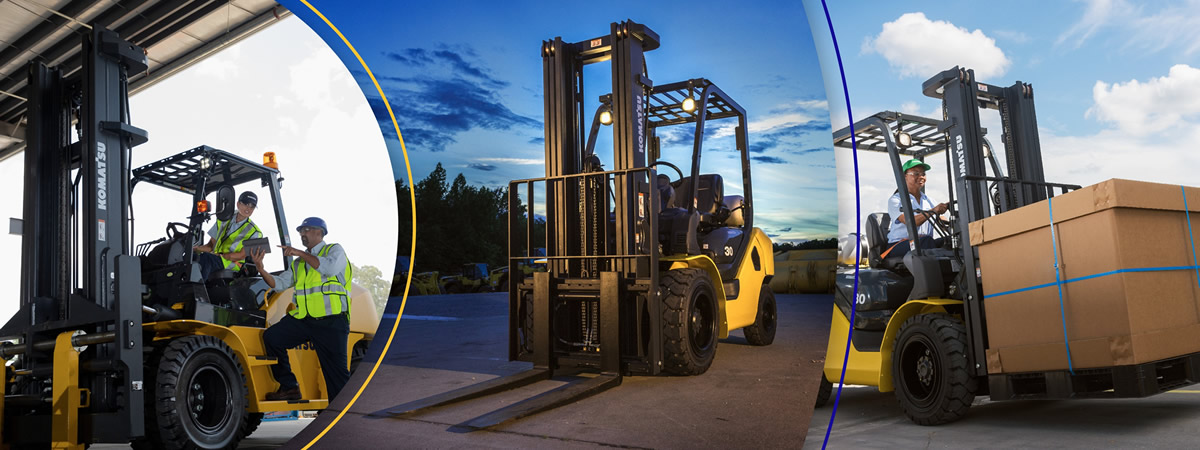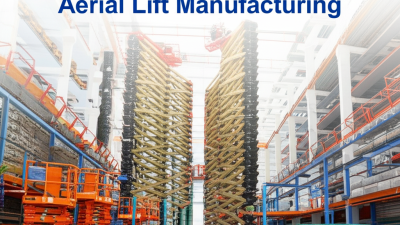
As the global demand for construction and maintenance equipment continues to rise, China's aerial lift manufacturing sector has emerged as a powerhouse in the industry. According to a report by Market Research Future, the aerial lift market is projected to reach USD 18 billion by 2026, growing at a CAGR of 7% from 2021 to 2026. This growth is largely driven by the increasing need for safety and efficiency in height-access operations across various sectors, including construction, telecommunications, and tree care. China, leveraging its advanced manufacturing capabilities and cost efficiencies, has positioned itself as a key player in this lucrative market.

As we delve into the benefits of various types of aerial lifts, it is crucial to understand how these innovations not only enhance operational productivity but also contribute to worker safety and overall project effectiveness.
The aerial lift manufacturing industry in China is poised for significant growth, projected to reach a market value of approximately $4.5 billion by 2025. This surge is largely driven by increased investments in infrastructure, urbanization, and the rising demand for safer and more efficient lifting solutions across various sectors such as construction, mining, and transportation. According to a recent report by MarketsandMarkets, the global aerial work platform market is expected to grow at a CAGR of 11.3%, with China emerging as a key player due to its robust manufacturing capabilities and favorable government policies that support industrial growth.
In the coming years, innovations in aerial lift technology will further enhance China's competitive edge in the global market. Developments in electric-powered lifts and advanced control systems are expected to dominate the landscape, catering to a growing emphasis on sustainability and operational efficiency. As per a report from Research and Markets, China's export of aerial lifts is anticipated to account for over 30% of the global market share by 2025, solidifying its position as a leading exporter. With these advancements and a strong focus on quality, China is set to redefine the standards of aerial lift manufacturing on a global scale.
This chart illustrates the projected growth in aerial lift manufacturing in China from 2023 to 2025 across various segments.
China has established itself as a formidable player in the global aerial lift manufacturing market, with several companies significantly contributing to its export capabilities. In recent years, Chinese manufacturers have capitalized on the growing demand for aerial lift equipment, which is essential for various industries such as construction, logistics, and maintenance. According to recent market analysis, China's share in the global aerial lift exports has seen a notable increase, driven by innovations in technology and efficient production methods that enhance competitiveness.
Key players in this sector are utilizing advanced manufacturing techniques and global supply chain strategies, enabling them to not only fulfill domestic needs but also meet international demands. Reports indicate that the growth in China's aerial lifts export market comes amid a period of expansion in its overall manufacturing sector, which has experienced high credit growth. This expansion is complemented by a broader shift towards aligning production capabilities with global market requirements, suggesting that Chinese aerial lift manufacturers are strategically positioned to lead in both innovation and export volumes.
China is rapidly emerging as a leader in aerial lift manufacturing, driven by innovative technologies that are set to transform its production landscape by 2025. As the demand for efficient and safe aerial work platforms grows, Chinese manufacturers are investing heavily in automation and smart technology to enhance their production processes.
These advancements not only improve efficiency but also ensure that safety standards are met, addressing the concerns of industries that rely heavily on aerial lifts for construction and maintenance tasks.
By implementing advanced robotics and artificial intelligence in their production lines, Chinese manufacturers are significantly reducing lead times and costs. This shift towards a more digitalized manufacturing environment allows for real-time data analysis and predictive maintenance, which together optimize operations and minimize downtime.
Furthermore, sustainable practices are increasingly integrated into aerial lift production, with a focus on reducing energy consumption and material waste. As China solidifies its position as a powerhouse in this sector, the convergence of innovation and sustainability will play a crucial role in shaping the future of aerial lift manufacturing.
The aerial lift manufacturing sector in China is poised for significant growth as global demand for lifting equipment continues to rise. With infrastructure projects increasing and a shift towards more sustainable and efficient construction practices, Chinese manufacturers are channeling their resources to develop innovative and versatile aerial lift solutions. This trend is further amplified by the government's support for advanced manufacturing technologies and increased investments in R&D, enhancing the competitiveness of China's aerial lift products in the international market.
Forecasts indicate that China's aerial lift exports will experience robust growth over the next few years. The rising popularity of electric and hybrid lift systems, driven by environmental regulations and operational efficiency, is particularly noteworthy. Additionally, as global markets recover from disruptions, the demand for aerial lifting equipment in sectors such as construction, warehousing, and logistics is expected to surge. Consequently, Chinese manufacturers are well-positioned to capitalize on these opportunities, not only by expanding their export capabilities but also by establishing strategic partnerships worldwide to leverage their technological advancements.
China has emerged as a dominant force in the global aerial lift manufacturing sector, significantly influencing both production scales and technological advancements. Recent statistics reveal that China's exports of aerial lifts have increased by over 30% in the past few years, positioning the country as the largest exporter of these critical machines. This surge in output is largely attributed to the rapid urbanization and infrastructure development projects throughout the nation, driving demand not only domestically but across the globe.
Insights into China's manufacturing capabilities highlight the combination of advanced technology integration and cost efficiency. Chinese aerial lift manufacturers are leveraging cutting-edge automation and smart manufacturing techniques to improve quality and productivity. Additionally, the competitive pricing of Chinese products has allowed them to penetrate diverse markets, from developing nations looking to enhance their capabilities to established economies aiming to optimize their logistics and construction activities. As the global demand for aerial lifts continues to grow, China's pivotal role in meeting this market need cannot be overlooked, underscoring its status as a leading export powerhouse in this field.
| Year | Total Exports (USD Billion) | Growth Rate (%) | Market Share (%) | Top Export Destinations |
|---|---|---|---|---|
| 2018 | 1.5 | 10 | 25 | USA, Europe |
| 2019 | 1.7 | 13 | 27 | USA, Asia |
| 2020 | 2.0 | 18 | 30 | Europe, Africa |
| 2021 | 2.5 | 25 | 33 | USA, Latin America |
| 2022 | 3.0 | 20 | 35 | North America, Europe |
Content © 2025 Komatsu. All Rights Reserved
